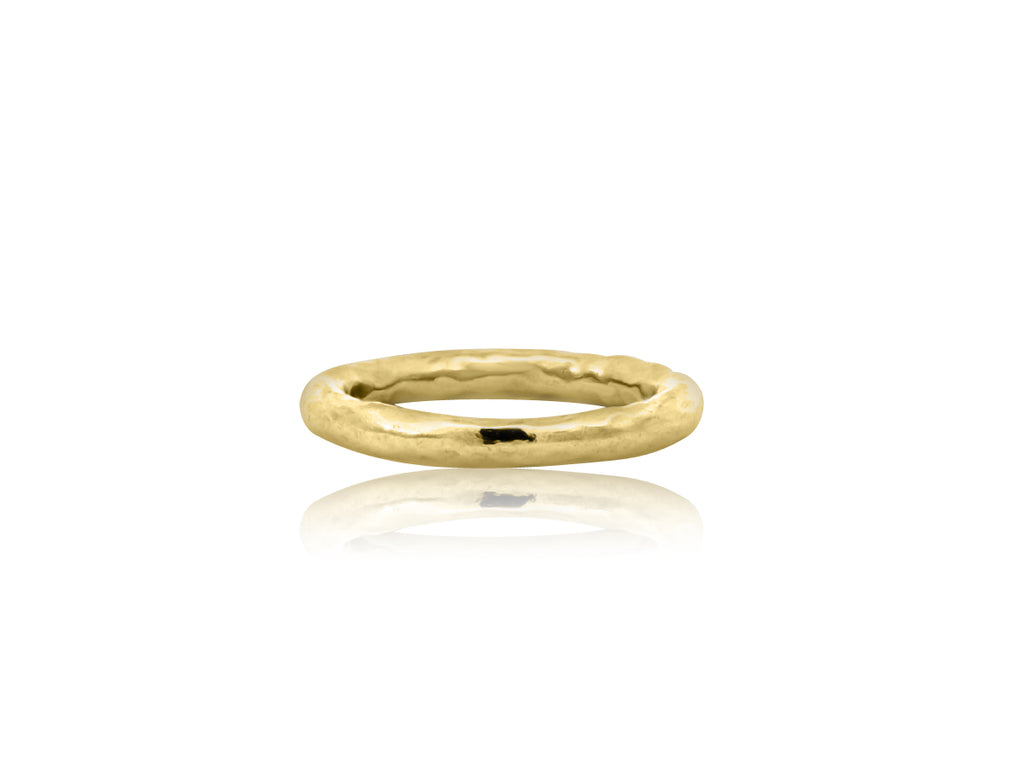
In the dazzling world of jewelry, gold reigns supreme, cherished for its beauty, rarity, and malleability. However, not all gold is created equal. The purity of gold is measured in karats, a term that often confuses consumers. In this comprehensive article, we will demystify what a karat of gold means and how it influences the quality, value, and appearance of gold jewelry. By the end, we will introduce you to Trabert Goldsmiths, a premier destination for exquisite gold jewelry in the San Francisco Bay Area, offering both modern and vintage collections that cater to every taste.
The Essence of Karats: Defining Purity
What is a Karat of Gold?
The karat system is used to express the purity of gold. Pure gold is soft and not practical for daily wear as jewelry. Therefore, it is alloyed with other metals like copper, silver, zinc, or nickel to enhance its strength and durability. The karat system denotes the ratio of pure gold to these alloy metals in a piece of jewelry.
A karat is 1/24th part by weight of the total mass, meaning 24-karat gold is considered 100% pure gold. As the karat number decreases, so does the purity of the gold. For instance, 18-karat gold is 75% pure gold and 25% alloy metals.
Why Does Karat Matter?
The karat of gold affects various attributes of a piece of jewelry, including color, strength, and value. Higher karat gold will appear more yellow due to the higher gold content, while lower karats will have a subtler yellow hue, influenced by the alloy metals. Additionally, the karat affects the durability of the jewelry; lower karats, being alloyed with harder metals, tend to be more resilient and better suited for everyday wear.
Exploring the Karat Spectrum
24-Karat Gold: The Purest Form
24-karat gold is the epitome of purity, consisting of 100% gold. Its rich, vibrant yellow color is unmistakable, symbolizing luxury and wealth. However, its softness makes it less ideal for jewelry that withstands daily wear, such as rings and bracelets. It's more commonly used in investment gold bars and coins.
22-Karat Gold: A Balancing Act
With 22 parts gold and 2 parts alloy metals, 22-karat gold strikes a balance between purity and practicality. It retains the deep yellow color of nearly pure gold but with added durability. It’s popular in cultural jewelry, such as Indian wedding jewelry, where high gold content is valued alongside wearability.
18-Karat Gold: The Standard in Fine Jewelry
18-karat gold, containing 75% gold, is a favorite in fine jewelry. It offers a perfect blend of strength and purity, making it ideal for a wide range of jewelry, including gold engagement rings and delicate necklaces. Its color is slightly less saturated than 22-karat gold but still distinctly yellow, appealing to those who love the true essence of gold without the compromises of higher karats.
14-Karat Gold: Durability Meets Beauty
14-karat gold, with 58.3% gold content, is highly favored for its excellent durability while maintaining a rich gold appearance. It’s more resistant to scratching and wear, making it an ideal choice for everyday jewelry pieces. The added alloys can also introduce a variety of colors, such as white gold and rose gold, expanding the aesthetic options for designers and consumers alike.
10-Karat Gold: The Practical Choice
10-karat gold, which is 41.7% gold, is the most durable and affordable gold jewelry option. Its lower gold content means it can withstand daily wear and tear very well, making it a popular choice for active lifestyles and budget-conscious buyers. The color is less yellow than higher karat golds, but it still retains a warm hue that appeals to many.
Understanding the Impact of Karat on Price and Value
The purity of gold not only affects the appearance and durability of jewelry but also its price and long-term value. Higher karat gold jewelry is more expensive due to its higher gold content. However, it's also more susceptible to damage and wear over time, which can affect its resale value.
Conversely, lower karat gold jewelry is more affordable and durable but has a lower resale value due to its reduced gold content. When purchasing gold jewelry, it's essential to consider not just the initial price but also the piece's longevity and potential value retention over time.
Caring for Your Gold Jewelry
Regardless of the karat, gold jewelry requires proper care to maintain its luster and value. Regular cleaning with a soft cloth and mild detergent can help remove oils and dirt. It’s also advisable to store gold jewelry separately to prevent scratches and to remove it during activities that could damage it, such as swimming or heavy physical work.
The Trabert Goldsmiths Experience
Understanding what a karat of gold means is crucial when selecting jewelry that you’ll love and cherish for years to come. It’s not just about the purity but also about how the gold’s characteristics align with your lifestyle and preferences.
At Trabert Goldsmiths, located in the heart of the San Francisco Bay Area, we celebrate the timeless beauty of gold through our curated collections of modern and vintage jewelry. Whether you're captivated by the allure of 24-karat gold or seeking the practical elegance of 14-karat pieces, our selection caters to every preference and lifestyle.
Our expertly crafted collections range from exquisite engagement rings that capture the essence of eternal love to statement pieces that embody modern sophistication. We invite you to experience the beauty and craftsmanship of Trabert Goldsmiths, where every piece tells a story. Visit our storefront or browse our online collection to discover the perfect blend of modern and vintage gold jewelry. Let us help you find a piece that speaks to your heart, crafted with care and expertise that only Trabert Goldsmiths can offer.

FAQs
What does "karat" actually measure in gold?
Karat measures the purity of gold, indicating how much of the metal in a piece of jewelry is pure gold compared to alloy metals. The karat system ranges from 1 to 24, with 24-karat gold being 100% pure.
Why is pure gold (24-karat) not recommended for most jewelry?
Pure gold is very soft and malleable, making it prone to scratching and deforming with daily wear. Most jewelry is made from gold that is alloyed with other metals to increase its strength and durability.
How does the karat of gold affect its color?
The karat of gold impacts its color due to the proportion of gold to alloy metals. Higher karat gold will have a deeper yellow color, while lower karat gold, having more alloy metals, will appear lighter or may even have a different color, such as the white of white gold or the pinkish hue of rose gold.
How do I know if my gold jewelry is real and what its karat is?
Real gold jewelry often has a hallmark or stamp that indicates its karat. This mark shows the purity level of the gold used in the piece, such as "18K" for 18-karat gold. If you're unsure, a professional jeweler can test the gold for its purity.
Is it possible to change the karat of existing gold jewelry?
Altering the karat of gold jewelry typically involves melting down the original piece and mixing it with either more gold or more alloy metals, depending on whether you wish to increase or decrease the karat. This process should be done by a skilled goldsmith.
